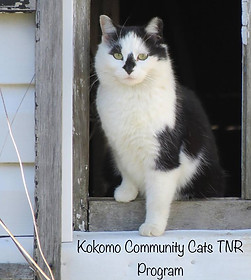top of page
Why TNR?
Trap-Neuter-Return (TNR) is the practice of humanely trapping free-roaming cats, spay or neutering, vaccinating for rabies, and eartipping. Healthy cats are then returned to their colonies to live out their lives without producing kittens or being a nuisance. The cats are managed by a caretaker who provides food, water, shelter, and any needed vet care.
TNR is the most humane and cost effective approach for stray and feral cats. Now in practice for decades in the U.S. after being proven in Europe, scientific studies show that TNR improves the lives of feral cats, improves their relationships with the people who live near them, and decreases the size of colonies over time. Spaying and neutering improves the lives of the cats by preventing certain cancers, relieving constant stresses of mating and pregnancy. Mating behaviors cease like roaming, yowling, spraying, and fighting and unwanted kittens being born under your porch or in your shed. These behaviors are seen as a nuisance and the cause of frequent calls to your local animal control.
TNR allows the cats to remain in their current territories without being collected and taken to our already overcrowded shelters. Because feral cats are not adoptable, they are often euthanized.
Catch and kill is the traditional approach to controlling feral cats. Attempts may temporarily reduce the number of feral cats in a given area, but two things happen: intact survivors continue to breed, and other cats move in to the now-available territory. This is a phenomenon known as the vacuum effect and it is documented worldwide. This endless, cruel cycle is not supported by the public and is a gross misuse of tax dollars. The vacuum effect is just one reason catch and kill is so ineffective.
The Vacuum effect. Why catch and kill does not work.
What is a community cat?
Any free-roaming cat that may be a stray or feral is a community cat. Feral or wild cats were more than likely born outside and have never had any human contact. They may run when you approach them or keep their distance. These cats are not adoptable unless socialized at a very young age.


A cat with an eartip has been fixed and vaccinated through a TNR program and is part of a managed colony. The tip is a 1/4 inch snip off the left ear and is done while the cat is sedated. Feral cats are not able to be handled and difficult to visualize if they have been fixed. The eartip can be seen from a distance. Repeated traps and trips to the vet are stressful and a waste of resources. A trapped healthy-looking, eartipped cat should be released immediately. These cats should NOT go to a shelter but should be left where they are.
Did you know that Indiana Gov. Mike Pence signed House Bill 1199 allowing TNR in mobile home communities?
Citations Affected: IC 16-41-27-16. Synopsis: Release of feral cats. Provides that the prohibition against permitting domestic animals to run at large in a mobile home community does not apply to feral cats that are caught and released as part of a spay and neuter program designed to reduce the number of feral cats in the area. Effective: July 1, 2014.
bottom of page